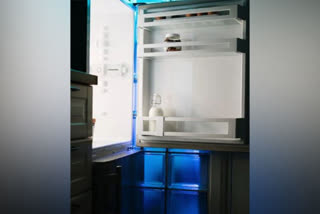Hyderabad: Adding salt on the road before a winter storm alters the formation of ice. Using this basic concept, the researchers at the Department of Energy, Lawrence Berkeley National Laboratory (Berkeley Lab), have developed a new heating and cooling method. The technique called "Ionocaloric Cooling" was described in a paper published in the journal Science.
Ionocaloric cooling uses energy, or heat, stored or released during the changing phases of a material, like solid ice turning into liquid water. Melting a material absorbs heat from the surroundings while solidifying it releases heat. The ionocaloric cycle causes this phase and temperature change through the flow of ions (electrically charged atoms or molecules) which come from salt.
Researchers believe that the method could one day provide an efficient heating and cooling alternative, which could account for more than half of the energy used in homes, and help phase out currently ongoing "vapour compression" systems, which utilize gases with high global warming potential as refrigerants. Ionocaloric refrigeration could eliminate the risk of such gases escaping into the atmosphere by replacing them with solid and liquid components.
"The landscape of refrigerants is an unsolved problem: No one has successfully developed an alternative solution that makes stuff cold, works efficiently, is safe, and doesn't hurt the environment," said Drew Lilley, a graduate research assistant at Berkeley Lab and PhD candidate at UC Berkeley who led the study. "We think the ionocaloric cycle has the potential to meet all those goals if realized appropriately."
For countries to meet climate change goals, such as those in the Kigali Amendment (accepted by 145 parties, including the United States in October 2022), it is essential to find a replacement for current refrigerants. The agreement commits signatories to reduce the production and consumption of Hydrofluorocarbons (HFCs) by at least 80% over the next 25 years. HFCs are powerful greenhouse gases found in refrigerators and air conditioners and can trap heat thousands of times as effectively as carbon dioxide.
The new ionocaloric cycle joins several other kinds of "caloric" cooling techniques in development. Methods such as magnetism, pressure, stretching, and electric fields - to manipulate solid materials so that they absorb or release heat are included in the development. Ionocaloric cooling differs by using ions to drive solid-to-liquid phase changes. Using a liquid gives the added benefit of making the material pumpable, which makes it easier to get heat in or out of the system - something solid-state cooling has always struggled with.
